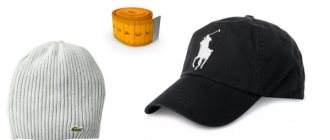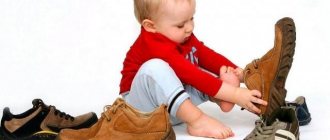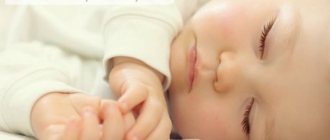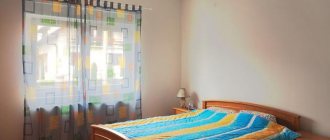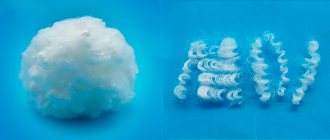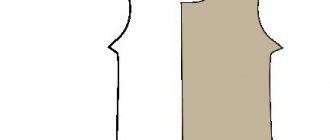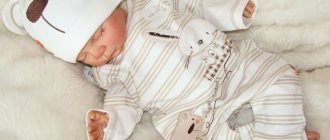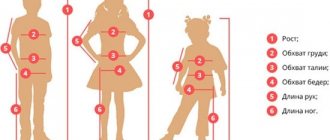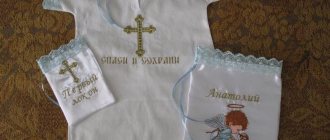The long-awaited moment has arrived. You and your baby are finally being discharged from the maternity hospital. While you were in the maternity hospital, the department staff helped you in caring for your child, and everything seemed clear and understandable. But when you are left at home, alone with your baby, everything seems much more difficult. So that you don’t get confused, let’s talk about newborn hygiene once again.
How to care for the umbilical wound
Why and why? The umbilical cord usually falls off on days 3-5 of the child's life. In its place remains the so-called “umbilical wound”, which heals by 10-14 days of life. In order to speed up the healing process and prevent infection from entering the wound, it is necessary to care for it daily. It is more convenient to treat the umbilical wound after bathing the child. It's not difficult at all, you can do it!
So, you will need: sterile cotton swabs, 3% hydrogen peroxide solution, salicylic alcohol.
- First you need to: remove rings and watches from your hands, wash your hands thoroughly.
- Unwaddle the baby, wash him if necessary and place him on the changing table.
- Using the thumb and forefinger of your left hand, spread the edges of the umbilical ring (with your index finger, pull the skin above the navel up towards the chest, and with your thumb, pull the skin under the navel down).
- Now take a bottle of peroxide in your right hand and drop 1-2 drops directly onto the umbilical wound. Wait 20-30 seconds until the peroxide fizzes and foams - it washes away the dead crusts, cleaning the wound. Continuing to hold the skin in the navel area with your left hand, take a sterile cotton swab with your right hand and dry the umbilical wound with gentle blotting movements. There is no need to try to remove those crusts that have not separated on their own - their time has not yet come. Perhaps they will disappear tomorrow or in a day.
- Take another cotton swab, dip it in salicylic alcohol, and spread the edges of the umbilical ring again. Gently but thoroughly blot the umbilical wound with the stick, and then wipe the skin around the navel in a circular motion.
- Let the alcohol dry for a few seconds
- That's all. You can put a diaper on your baby and swaddle him.
Experts’ opinions on the relevance of using the device
It is important for young mothers to find out the opinion of a specialist about things that are intended for the baby. All reviews about such a sleep device are only positive; pediatricians believe that it is simply necessary and even useful. Positioner advantages:
- Protects the baby from choking if he suddenly burps in his sleep.
- It prevents deformation of the skull bones and flattening of the occipital region, and also reduces the load on the thoracic region.
- According to recent data, it even reduces the risk of sudden infant death syndrome.
- Allows the baby to sleep in a comfortable physiological position.
- Reduces the risk of digestive problems.
- Does not allow the baby to roll over onto his stomach in his sleep.
- Thanks to the correct fixation of the body, the baby sleeps soundly and calmly.
- Will not allow the baby to roll out of the bed if it does not have sides.
- Allows baby to sleep safely with parents.
The positioner makes life easier for a young mother. She can afford to sleep longer at night, because there is no need to be afraid that the baby will roll over. Also, while he is awake, you don’t have to worry that he will fall; the soft sides will not allow him to slide down. The device is useful, convenient and comfortable not only for the baby, but also for his parents.
How to wash a newborn baby
Why and why? The skin of babies is much more delicate than that of adults, irritation and diaper rash occur very easily, so you need to wash the baby every time after he has had a bowel movement. In addition, keeping the skin clean helps your baby develop the first skills of neatness.
If you are away from home, you can use special baby wipes instead of washing, but you should not completely replace washing with such a simplified skin treatment.
A little trick. Babies tend to have a bowel movement after or during each feeding. This leads to the conclusion that washing before eating is a thankless task.
- The first thing you need to do is roll up your sleeves, remove rings and watches from your hands, adjust the temperature and pressure of running water. Prepare a thin diaper to dry the skin after washing. It is very convenient to just hang it on your shoulder and always have it at hand.
- Unwaddle your baby and remove his diaper.
- It is more comfortable to hold the baby with your left hand and wash it with your right.
- The boy is held face down when washing. Take the baby so that his chest lies across your forearm, while you hold his shoulder with the fingers of your left hand. Oddly enough, but hanging in this position, the baby does not experience the slightest discomfort.
- The girl needs to be washed only from front to back, so as not to contaminate her genitals. Place the child's back on the forearm of your hand, so that the head is on the bend of the elbow, and you will hold her left thigh with your fingers. This position allows you to securely hold the baby, and leaves you complete “freedom of action.”
- Wash your baby by scooping water into your palm using gentle movements from top to bottom, carefully removing dirt from the skin. It is especially important to wash all skin folds where dirt can accumulate and cause irritation. Do not use soap unless absolutely necessary; washing with soap once a week is sufficient.
- When washing the girl, there is no need to “rub” the genitals, since the mucous membrane is very delicate. In addition, overzealous washing removes the protective lubricant that protects the genitals from pathogens.
- After washing, dry your baby's skin. First, wrap the diaper over your baby's lower body and transfer him to the changing table. Then thoroughly blot the genitals, groin, buttocks and popliteal folds.
- If necessary (irritation), treat skin folds with a small amount of baby oil.
- Your baby is happy with life again. Now it would be good to “air out the butt” for 5-10 minutes before putting on a new diaper.
DIY positioner
Many young mothers prefer not to spend money, but to make a positioner themselves. Simple models, for example, limiting rollers, are easy to sew without special skills. A simple pattern and the presence of a sewing machine will help solve the problem. The main thing to consider when deciding to sew a device with your own hands is the choice of materials. They must be hypoallergenic, breathable, and comfortable for the child.
In addition to restrictive bolsters, young mothers often sew cocoon beds. They are not as comfortable as ergonomic ones, but they can help solve the problem of creating a comfortable position for the child.
Bathing a newborn
Why and why? Bathing a newborn (hygienic bath) is carried out for all healthy children after the umbilical remnant falls off. Before the umbilical wound heals, it is recommended to bathe the baby in boiled water or running water, but you need to add a solution of potassium permanganate (potassium permanganate) to it.
Until your baby is six months old, it is advisable to bathe him daily; in the second half of his life, you can do this every other day. As a rule, children really like to swim, because before birth, water was their natural element. In water, the muscles relax, the child feels comfortable and calm. The duration of bathing in the first year of life is 5-10 minutes. Washing with soap is carried out no more than once a week. It is advisable to bathe the child no earlier than an hour after feeding, preferably 10-15 minutes before evening feeding.
It is more convenient to bathe a newborn baby together; most often, the father is called upon to help, and in many families, bathing the baby is exclusively the father’s “honorable mission.” Large and reliable male hands hold the baby’s tiny body with amazing tenderness, which contributes to the emergence and development of close contact between the child and the father, who at these moments feels very needed. But if you have to do without an assistant, don’t worry, you can do it just fine on your own.
Important! If your baby is unwell, has a fever or signs of skin irritation, it is better to postpone bathing until you consult your pediatrician.
You will need: a baby bath, a jug of warm water for rinsing the baby, a special water thermometer, baby soap, a terry mitten, a large terry towel, a diaper, baby oil, a changing table with prepared clothes for the baby, cotton swabs with limiters or cotton swabs.
If the umbilical wound has not yet healed, prepare two containers with cold and hot boiled water or a solution of potassium permanganate to add to running water. The solution of potassium permanganate must be added to the water “drop by drop” until the water turns a faint pink color. Before using potassium permanganate, make sure that the crystals are completely dissolved, as getting a potassium permanganate crystal on the skin can cause a burn.
The air temperature in the room while bathing the child should be 22-24 degrees. You can bathe your baby in the bathroom, if it is spacious enough, or in the kitchen.
- First of all, you need to prepare the bath - wash with a brush and soap and rinse with boiling water. Place the bath in a stable, comfortable position and fill it ½ full with water. First pour cold and then hot water to avoid steam formation. Now you need to immerse the thermometer in water. The temperature of the water in the bath should be 37-37.5 degrees. Measuring the water temperature with your elbow is only possible if you have sufficient experience; a thermometer is always more reliable.
- Lay out the baby's clothes on the changing table, lay a towel on top, and place a diaper on it for wiping. However, you can put the diaper near the bath to make it more convenient for you to take it.
- Undress the child and, if necessary, wash him. Take the baby so that the head rests on the forearm of your left hand, and hold the baby’s left shoulder joint with your fingers (the thumb clasps the shoulder from above, place the other fingers in the armpit). Use your right hand to support the baby's buttocks and legs.
- Slowly immerse the baby in the bath: first the buttocks, then the legs and torso. Continue to support the baby's head with your left hand, leaving your right hand free for washing. The water level should reach the baby's armpits.
- Swing the child on the water back and forth, left and right. Your movements should be smooth and unhurried. Smile at your baby and talk to him affectionately.
- If you plan to wash the child with soap, then the “mitten” is put on the right hand. Lather your body using gentle circular motions and immediately rinse the soaped areas. First, wash your head from the forehead to the back of the head, then your neck, arms, chest, abdomen, legs. Rinse skin folds thoroughly. Lastly, wash your buttocks and genitals.
- Remove the baby from the water with its back facing up. Rinse your body and wash your baby's face with water from a jug. Place a diaper on the baby, place him on the changing table, and dry the skin with gentle blotting movements.
- Dry your ears with cotton swabs or cotton swabs.
- Lubricate the folds of the skin with baby oil. If necessary, treat the umbilical wound.
- Swaddle or dress your baby.
Now, to feel complete happiness, it would be nice for your baby to eat and sleep.
How can you replace a pillow for a child?
Firstly, you can place a cotton diaper folded in several layers under the head. The convenience of this method lies in the fact that, if necessary, the diaper can be easily replaced with a new one. After all, babies burp very often.
Secondly, you can use a large towel. They roll it up, lift the mattress, and place this roll of a towel in the place where the baby’s head is located on the crib. Many mothers appreciate this method, noting its convenience. The cushion under the mattress does not roll down, and the angle of the mattress can be adjusted to any angle. But pediatricians recommend not to exceed it by more than 30 degrees. Today, some manufacturers produce cribs on which you can set this angle of inclination without resorting to additional bolsters.
But, if for some reason a pillow should still be present in the crib, then one should proceed from the age of the baby, and not because of the mother’s liking for this or that product. So, a flat pillow for newborns will be an excellent way out of this situation. When purchasing it, you just need to remember its height. As a rule, the height of the pillow is equal to the baby’s shoulders, which is 1-2 cm. Don’t forget about its hypoallergenicity.
Regardless of whether a special flat pillow for newborns is purchased, or parents can do without it, the mattress should still have an inclination angle. There are the following explanations for this:
- To improve blood circulation in the head.
- This is especially true for babies who often burp a lot not only after feeding.
- Stuffy nose. A small angle of inclination of the mattress will promote freer breathing.
When the baby's age approaches one year, parents can already think about buying a special pillow for him. But this situation is purely individual. And pediatricians advise that if the baby is comfortable sleeping without a pillow, then there is no need to purchase one yet. And if the baby tries to put toys, a blanket, or his hands under his head, then it’s time to choose this sleeping accessory.
But unfortunately, there are cases when a baby is born with pathologies or acquires certain diseases in which sleeping without a pillow is simply unthinkable. Then parents should ignore the advice of doctors that there is no need for a pillow until children are 1-3 years old.
A pillow for a newborn is necessary to purchase if:
- The baby suffers from congenital torticollis. This pathology should not be underestimated, but it is worth taking on its elimination from the very first days. In this case, placing the child on the pillow is simply necessary. After all, its head should be located only in the correct position, the outcome of the treatment depends on this. To remove torticollis, doctors recommend buying an orthopedic pillow for a child.
- The infant has an abnormal structure of the skull bones. This applies to those babies who choose the same position to sleep. And the baby’s bones in this period are very soft and easily deformed. In this case, you need a pillow with a depression to fix the baby's head in the desired position.
But some mothers who have encountered this problem report that they can do without a special pillow. If the baby likes to sleep with his head only on the right side, thereby causing deformation of the skull bones on the right side, then you should roll up a roll from the diaper, place it along the baby, as if tucking him in, and forcefully turn the head to the left. No matter how the baby tries to turn his head back, the roller will not allow him to do this. But you should know when to stop and still allow your baby to sleep on the side he likes from time to time, otherwise deformations of the skull bones may affect the other side.
- The baby was diagnosed with hypotonicity or hypertonicity. Then an orthopedic pillow for a baby will be an additional way to combat illnesses.
- If a child often burps, then his head must be on his side when lying down. In this case, it is practically impossible to do without a pillow.
The decision about whether your baby will sleep on a pillow or not should be made consciously, based on the personality and health of the baby. In addition, it is worth soberly assessing whether you can purchase a quality product. After all, not all manufacturers are equally conscientious. You may stumble upon a terrible pillow filling that will quickly develop an allergy in your baby. There is no need to chase cheapness, because the health of your baby depends on this product. If high-quality pillows are not available in your city or town, then let your baby sleep on a swaddle or raise the mattress at an angle with a towel.
Technologies do not stand still and today many manufacturers create pillows labeled 0+ (from the first days of life).
Morning toilet of a newborn
Why and why? We all know that “cleanliness is the key to health,” so every day we wash ourselves, brush our teeth, take a shower or bath. Without these usual hygiene procedures, a person feels uncomfortable. For a newborn baby, daily skin care is much more important than for an adult; in addition, the first habits of cleanliness begin to form unconsciously at such an early age.
The baby's daily toilet consists of washing, treating the eyes, nose, and skin folds. Until the umbilical cancer heals, it also needs to be treated daily. You need to wash your child after a night's sleep and during the day every time the child has had a bowel movement. The ears are treated as necessary in case of contamination and dried after each bathing. Children's nails are trimmed as they grow.
You will need: cotton pads (cosmetic pads), cotton wool for making flagella, baby oil or Vaseline, a container with warm boiled vodka, a container for used materials, scissors with rounded ends, cotton swabs with limiters, a set for treating the umbilical wound.
- First you need to remove rings and watches from your hands and wash your hands. Prepare everything you need: open a bottle of oil,
- wash the water container with soap, scald with boiling water, fill with warm boiled water,
- twist nasal flagella from small pieces of cotton wool, about 3 cm long and 2-3 mm in diameter,
- prepare a kit for treating the umbilical wound.
Now that you have everything at your fingertips, let's get down to business!
Pediatricians' opinion
Reviews about positioners among pediatric specialists are, for the most part, extremely positive. Here are a few of them:
M. V. Sevastyanov, pediatrician with 10 years of experience, Rostov-on-Don
“Over my many years of practice, I have seen many different devices that make life easier for young parents. But positioners are one of the best deals in recent times. Now I recommend them to all young mothers. I also advise young parents on choosing positioners.”
P. P. Overko, pediatrician with 12 years of experience, Yekaterinburg
“I have repeatedly recommended positioners to young parents, because in my opinion, it is not only convenient for dad and mom, but also useful for the child. After all, when using such a device for newborns, you can protect your baby in advance from many pathologies that often arise before the age of 1 year.”
And reviews on the official websites of manufacturers of such devices and in online stores are also no different in their positivity.
Komarovsky about sleep devices
Popular pediatrician Evgeniy Komarovsky also expressed his opinion about positioners for newborns. According to him, the above-mentioned device not only does not harm the baby, but also promotes the proper growth and development of his skeleton. But, according to the doctor, it makes no sense to buy such a device for the stated price.
Almost any positioner design (with rollers, cushions, fasteners, etc.) can be made by hand, says Komarovsky. The main thing is to choose the right materials for sewing and be able to approximately replicate the shapes of the bolsters or pillows. You can also find a diagram of such a device on the Internet.
Washing and eye care
Washing a newborn baby is done with warm boiled water using cotton pads. Children over 3 months can be washed with running water.
Take a cotton pad, moisten it with water, squeeze lightly (so as not to drip). Wipe your baby's face in the following order: forehead, cheeks and, lastly, the area around the mouth. Discard this disc.
Then treat your eyes with separate cotton pads for each eye, moistened with warm boiled water, from the outer corner of the eye to the inner.
Take a dry cotton pad and dry your child's face in the same sequence.
How to choose a positioner
When choosing, you should pay attention to several details and subtleties:
- The most correct option is the one that has a certificate of quality for products for newborns.
- The materials from which it is made must be natural and environmentally friendly, the same applies to fillers.
- You may be able to choose a model that includes a set of removable covers. This will make life much easier, as it will allow you to use the positioner continuously.
- It is advisable to choose universal models that can be used for up to 6 months.
- Pay attention to those options that have a “memory effect”. It is this model that will be able to adapt over time to the characteristics of the child’s body.
In the modern world this is far from news. However, before purchasing this item, read reviews from other moms who have already used the model you have chosen.
Care for skin folds
To treat skin folds, use baby or Vaseline oil. Ready-made baby wipes impregnated with oil are quite convenient. You can moisten a cotton pad with oil, or you can simply apply it to your palms.
Important! You cannot use oil and powder at the same time, because in this case the powder will roll into lumps, which can cause skin irritation and diaper rash.
First, lubricate the folds of the upper half of the body (from top to bottom) - behind the ears, cervical, axillary, elbow, wrist. Then, with another tampon, fold the lower half of the body (from bottom to top) - ankle, popliteal, inguinal, buttock.
Now, so that the baby does not look like an oil donut, excess oil from the skin needs to be removed with a dry cotton pad.
Ear care
The ears and external auditory canals should be dried from water after bathing. It is very convenient to use ready-made “ear” cotton swabs with limiters. If you don’t have them, you can make small tampons out of cotton wool. Dry your baby's ears with gentle blotting movements using separate swabs.
If discharge (earwax) has accumulated in the external auditory canal, you need to clean it using cotton swabs with limiters or cotton swabs soaked in Vaseline or baby oil. Insert the flagellum into the external auditory canal with careful rotational movements to a depth of no more than 0.5 cm. Use a separate flagellum for each ear canal.
Advantages and disadvantages
Using a positioner certainly has many advantages:
- the child does not roll over in his sleep and does not spit up;
- will not fall off the sofa or bed;
- will not turn around and cover his nose;
- the newborn's musculoskeletal system is correctly formed;
- Can be placed in an adult bed with parents.
Disadvantages include temporary limitation of use:
- without fixing fasteners - up to 4 months;
- with fixation - up to 6 months.
The fairly high cost of products also becomes a problem. Not all parents are willing to pay a large amount for a short period of operation.
Trimming nails
A newborn baby's nails need to be trimmed as they grow on his hands and feet to prevent the baby from scratching himself. Special children's scissors with rounded ends are convenient and safe.
A little trick. Many mothers are afraid of the thought that they will have to cut the nails on such tiny fingers that are constantly in motion. Therefore, everyone will be calmer if they do this “delicate work” when the baby is sleeping.
Take the child's hand so that only one finger remains free, on which you are going to trim the nail. Grab the finger with the thumb and index fingers of your left hand, holding it on both sides, and with the remaining fingers of your left hand you can hold the child’s other fingers.
Fingernails are trimmed in a semicircle, and toenails are trimmed in a straight line to avoid future problems such as ingrown toenails. You need to trim your nails with continuous movements of the scissors, and not “piece by piece.” Please check if there are any protruding sharp parts left on the nails.
Don’t forget to carefully collect the trimmed nails so that if they get lost in the folds of clothes and linen, they won’t injure your baby’s skin.
Types of sleep positioners
Manufacturers of positioners for newborns have done a good job, creating many different models that differ in design and cost. The most popular model today is the positioner with rollers, as it is very easy to use and, due to its compact size, does not take up much space. As for other device options, we will consider them below.
Rollers
Compact model with a very simple design. Two cylindrical bolsters of different sizes, located at the edges of the bed, will prevent the child from turning over or falling out of bed, and the connecting belt will allow you to adjust the distance between the bolsters, creating the optimal space for the baby.
Unlike many other models, bolsters can be placed not only on the bed, but also in a stroller or cradle. And additional fixing fasteners on the device will be able to hold even the most active child. It is recommended to use a device with this design for up to 4–5 months.
Positioner pad and tilt pad
The positioner pillow has a very similar design to the bolsters, only it secures the baby not on the sides, but in the back and tummy. This position of the child in sleep is considered the most comfortable and anatomically correct. This means that when using a positioner pillow, your child will not be able to get any injuries while falling headlong into a sound sleep.
A simplified version of the above model is an inclined pillow. It consists of only one triangular roller, and does not have clamps in its design. Its main task is to facilitate the baby’s breathing during sleep by raising the upper part of his body. And also in this position, the baby will not be able to choke on vomit. And for greater safety, the inclined cushion can be used in conjunction with other models of positioners.
Cocoon bed
A cocoon bed is the most convenient option for a positioner, which is often used for parents and a child to sleep together. This model has its own separate bed and a reliable fastener in the form of a belt, which is located on the baby’s tummy.
The price of a cocoon crib differs significantly from other models, upward. And the most famous manufacturer of this positioner option is. Such an ergonomic cocoon will not only protect your baby from injuries and incorrect sleeping positions, but will also completely replace his crib for the first 3-4 months of life.
With clasp
A similar version of a cocoon crib, which has a lower cost. It is based on a rectangular mattress with a belt-shaped fastener that securely secures the baby in a lying position on his back or on his side. Unlike an ergonomic cocoon, a mattress with a fastener does not provide the baby with a torso tilt, which is its big disadvantage.
Mattress positioner
A good option for children up to six months of age. It is an orthopedic mattress with a separate cushion under the head and two cushion cushions located on the sides. The dimensions of the device can be completely different, but doctors recommend taking models exclusively for growth.
Important! If the mattress positioner has become too small for your child, then do not rush to put it aside. After all, it is quite possible to use it in tandem with a stroller of a suitable size.
The price of a mattress positioner fluctuates between the cost of bolsters and pillows, and the price of a cocoon crib. But in terms of quality and functionality, it is not much inferior to the last option.
